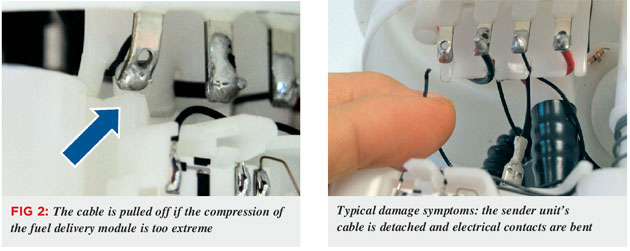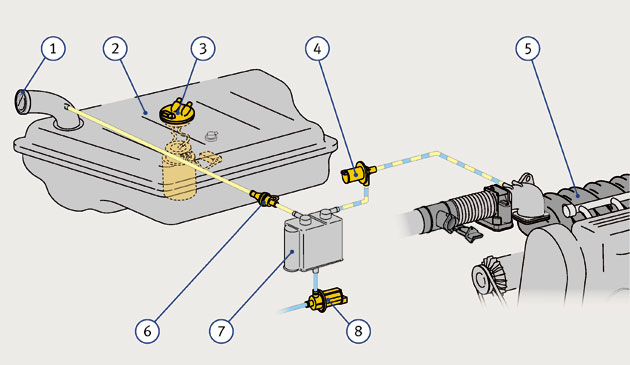
MS Motorservice International looks at fuel tank ventilation issues on Volvo S40/V40 1.6L/1.8L/2.0L & 1.9L/2.0L turbo models.
If there is a problem with the fuel tank ventilation system, a strong vacuum can develop inside the fuel tank, causing it to start collapsing in on itself. The fuel delivery module comprises a flange cover and the reservoir with the sender unit and fuel pump. Thanks to this two-part construction, the fuel delivery module can compensate for changes in the size of the fuel tank up to a certain degree.

However, if the vacuum becomes too strong during cold weather, for example, and the fuel tank shrinks too much, the sender unit’s cables can become detached.

Fuel tank ventilation systems
The fuel tank ventilation system prevents the emission of harmful hydrocarbons by binding fuel vapours with an activated carbon filter (ACF) in a special receptacle or canister (7). For this reason, the fuel tank ventilation system is also known as an activated carbon filter system or ACF system.
In certain operating states, the ACF canister is flooded with fresh air via the open canister purge shut-off valve (8). The accumulated hydrocarbons are channelled in a controlled manner for combustion via the regeneration valve (4).
The fuel tank ventilation system also provides air to the fuel tank, for example if a vacuum forms in the tank when fuel levels fall or the ambient temperature is low.
Possible causes of faults in the fuel tank ventilation system may be:
■ Defective solenoid valves,
■ Blocked activated carbon canister,
■ Blocked venting valve in the fuel tank cap (1),
■ Bent or blocked connections.

1 Fuel tank cap, poss. with venting valve
2 Fuel tank
3 Fuel pump
4 Canister purge valve/regeneration valve
5 Intake manifold
6 Fuel tank pressure valve
7 ACF canister
8 Canister purge shut-off valve









